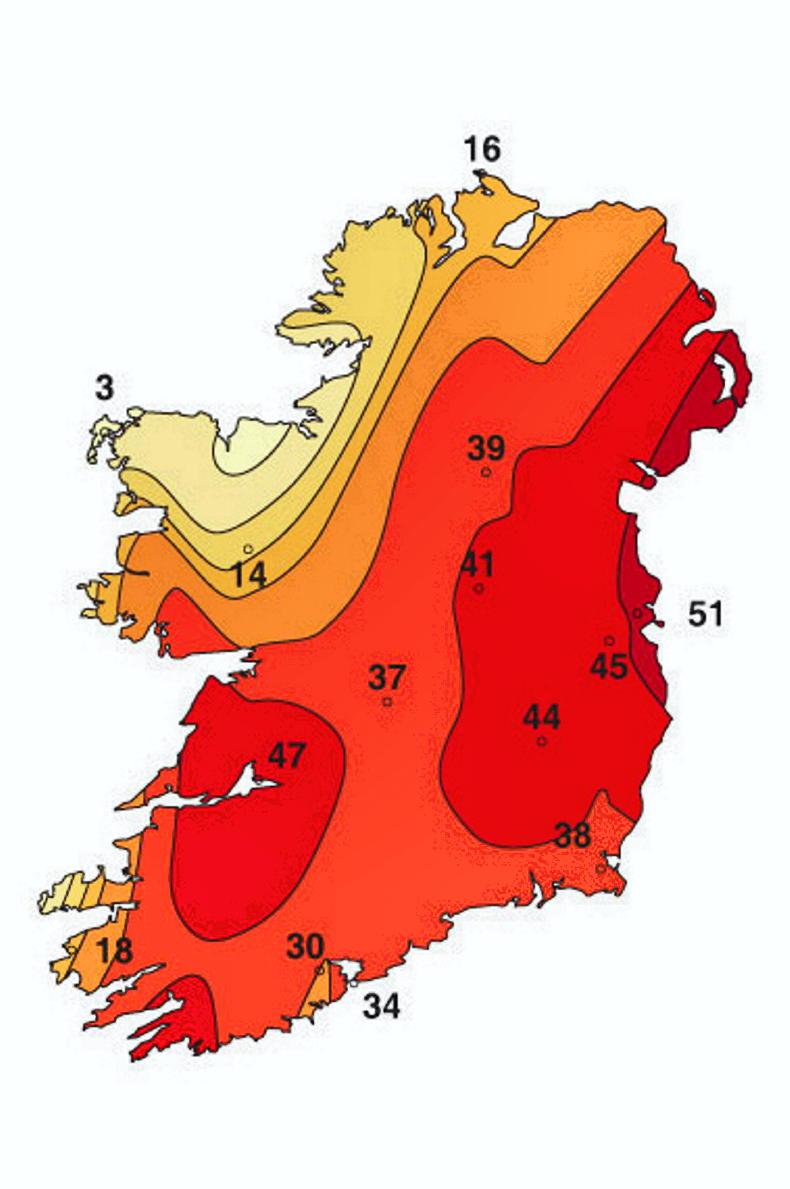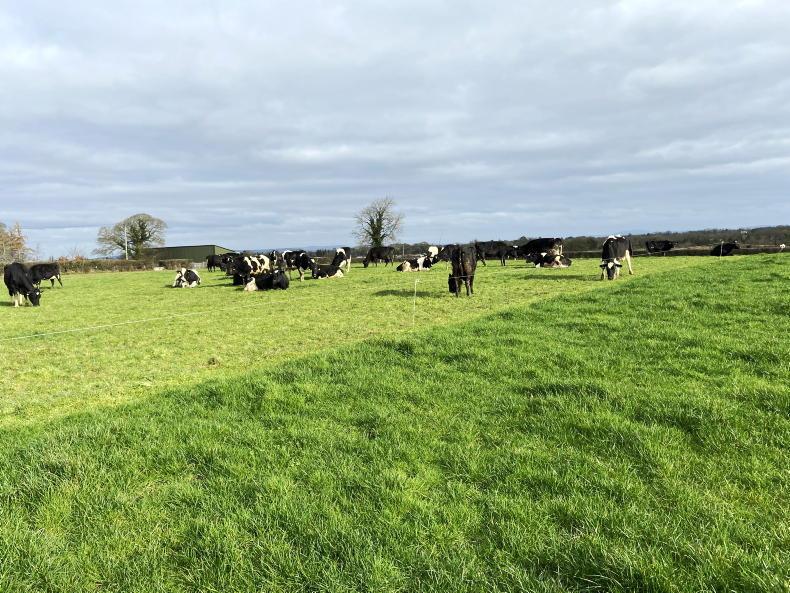Growth rates over the last week have been very variable, as rain continues to avoid some areas, while others have “got enough rain to keep them going”.
This week's predicted growth was sent with a warning that it was dependent on the rain forecast for Thursday.
But, in some areas, that never materialised, meaning growth has continued to struggle.
There has been a number of factors contributing to low growth rates, but assuming fertiliser is up to date, the two having the biggest affect at the moment are soil moisture deficit and having cut too much ground during the last round.
Soil moisture deficit
Once you have a soil moisture deficit of over 25mm, you will see it disrupt growth rates.

Soil moisture deficits for Thursday 24 June 2021.
A soil moisture deficit of over 50mm will result in significant reduction in growth rates.
With this in mind and the fact some areas are yet to get rain, anyone who finds themselves in this situation needs to act now to avoid running short of grass.
Key points
The key points are to:
Maintain an average farm cover (AFC) over 550kg DM/ha.Reduce demand in line with growth (don’t run down AFC down).Maintain a rotation of 21 days.Slow regrowth on cut ground. The low growth rates are also being contributed to due to the high level of silage cutting, pre-mowing and topping that has been done since early June in a bid to get on top of grass quality.
A wet May meant graze-outs suffered and there was little or no opportunity to cut surplus grass or correct grass quality.
This was then followed by a burst of growth in early June that led to a lot of corrective action being taken over the last five weeks or so.

Another option is to lower stocking rate by grazing ground on the platform stopped for second cut silage.
As a result of this, regrowths have been slow and, when coupled with a lack of rain covers, paddocks are much lower than expected.
For farmers in this scenario, any topping or pre-mowing should be suspended until grass supply recovers.
Until then, demand should be reduced by supplementation in the form of concentrates or high-DMD silage to bridge the gap.
Another option is to lower stocking rate by grazing ground on the platform stopped for second-cut silage.
Growth rates over the last week have been very variable, as rain continues to avoid some areas, while others have “got enough rain to keep them going”.
This week's predicted growth was sent with a warning that it was dependent on the rain forecast for Thursday.
But, in some areas, that never materialised, meaning growth has continued to struggle.
There has been a number of factors contributing to low growth rates, but assuming fertiliser is up to date, the two having the biggest affect at the moment are soil moisture deficit and having cut too much ground during the last round.
Soil moisture deficit
Once you have a soil moisture deficit of over 25mm, you will see it disrupt growth rates.

Soil moisture deficits for Thursday 24 June 2021.
A soil moisture deficit of over 50mm will result in significant reduction in growth rates.
With this in mind and the fact some areas are yet to get rain, anyone who finds themselves in this situation needs to act now to avoid running short of grass.
Key points
The key points are to:
Maintain an average farm cover (AFC) over 550kg DM/ha.Reduce demand in line with growth (don’t run down AFC down).Maintain a rotation of 21 days.Slow regrowth on cut ground. The low growth rates are also being contributed to due to the high level of silage cutting, pre-mowing and topping that has been done since early June in a bid to get on top of grass quality.
A wet May meant graze-outs suffered and there was little or no opportunity to cut surplus grass or correct grass quality.
This was then followed by a burst of growth in early June that led to a lot of corrective action being taken over the last five weeks or so.

Another option is to lower stocking rate by grazing ground on the platform stopped for second cut silage.
As a result of this, regrowths have been slow and, when coupled with a lack of rain covers, paddocks are much lower than expected.
For farmers in this scenario, any topping or pre-mowing should be suspended until grass supply recovers.
Until then, demand should be reduced by supplementation in the form of concentrates or high-DMD silage to bridge the gap.
Another option is to lower stocking rate by grazing ground on the platform stopped for second-cut silage.








 This is a subscriber-only article
This is a subscriber-only article











SHARING OPTIONS: